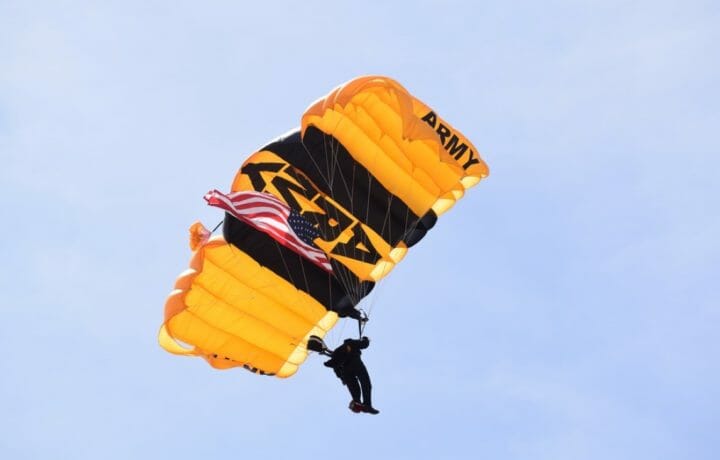The U.S. Army recently announced updates to its force structure in order to transform the service to better face threats. According to the news release, over the next decade, the Army plans to reorganize to ensure that it can deliver trained, cohesive and lethal forces “to meet future challenges in increasingly complex operations environments”. Along with the press release, the Army uploaded a document titled, ‘Army Force Structure Transformation’.
U.S. Army Transformation
The four-page document opened up with elements of why the Army is facing this latest transformation.
“Throughout its history, the Army has transformed to keep pace with technology, accomplish national strategic objectives, and defeat ever-evolving threats,” the White Paper begins. “For nearly twenty years the Army’s force structure reflected a focus on counterinsurgency and counterterrorism operations that dominated after the 9/11 attacks.”
The paper continues the introduction by stating that the security environment is changing and the evolving character of war, the Army is refocusing on conducting large scale combat operations against technologically advanced military powers.
Over the past year, the Army conducted rigorous assessments of its force structure using a process known as Total Army Analysis, the paper stated. TAA decisions are set to bring down “authorized” troop levels to approximately 470,000 by FY2029.
The TAA will guide the process of shrinking the Army’s excess, largely unmanned “hollow” force structure and build new formations equipped with new capabilities needed for large scale combat operations.
Multi-Domain Task Force
One of the most significant additions to the new force structure is the addition of the Army’s five Multi-Domain Task Force, the White Paper continued.
According to the document, “these task forces are designed to increase the depth and scale at which Army forces can protect Joint and Coalition forces, conduct intelligence gathering and synchronization, deliver non-kinetic space and cyber effects to shape operations, and deliver long-range fires in support of joint force maneuver. These task forces are new theater-level assets which include a headquarters and headquarters battalion, a multi domain effects battalion, a long-range fires battalion, an indirect fire protection capability (IFPC) battalion, and a brigade support battalion.”
Three of the task forces will be assigned to the U.S. Army Pacific Command, one will be assigned to the Europe-Africa Command, and another will be service-retained with a focus on the CENTCOM area of responsibility.
Making the Cuts
In order for these new additional formations to be added, along with a reduction in force, the Army needed to identify 32,000 excess positions across the rest of the force, that they are ‘phasing out’. The White Paper emphasized the fact that these planned reductions are authorizations and not individual soldiers.
“The Army is not asking current soldiers to leave,” the plan explains. “As the Army builds back end strength over the next few years, most installations will likely see an increase in the number of soldiers actually stationed there. “
The TAA process also took into account Army Special Forces, which has increased in size over the past 20 years.
“As a result, working closely with Low-Intensity Conflict and U.S. Special Operations Command, the Secretary of Defense determined the Army could reduce Army special operations forces by approximately 3,000 authorizations. Specific reductions will be made based on an approach that ensures unique SOF capabilities are retained. Positions and headquarters elements that are historically vacant or hard to fill will be prioritized for reduction.”
Adjusting Recruiting Efforts
The document also states, that at the same time that the force is modernizing, the Army will also continue to transform its recruiting efforts so that it can build back its end strength, which is needed to provide strategic flexibility, reduce strain on frequently deploying soldiers, and add new capabilities to the force.
The new capabilities will include the modernization and recapitalization of major weapons platforms, some as dating back to the Cold War.
“The Army must solve its recruiting challenges to successfully transform for the future,” the paper states. “Building on successful initiatives like the Soldier Referral Program and the Future Soldier Prep Course, which has brought more than 14,000 new soldiers into the Army since its inception in the summer of 2022, the Army is now making more fundamental changes to its recruiting approach. “
One interesting new effort is the creation of ‘recruiting warrant officers’ beginning Spring 2024. Their training will be far different than the recruiters of the past, and their target demographics of recruits will add beyond the range of high-school students by 2028.
The U.S. Army Recruiting Command will become a 3-Star command that oversees all five recruiting brigades, Army Cadet Command, and the Army’s Enterprise Marketing Office, and they will report directly to the Secretary of the Army and the Chief of Staff of the Army.
“The transformation of Army force structure and recruiting will not happen overnight, but changes in both areas are underway,” the paper ends. “In the years ahead, the Army will continuously transform and improve in order to become more ready, agile and lethal while fulfilling our critical responsibilities to our nation.”




